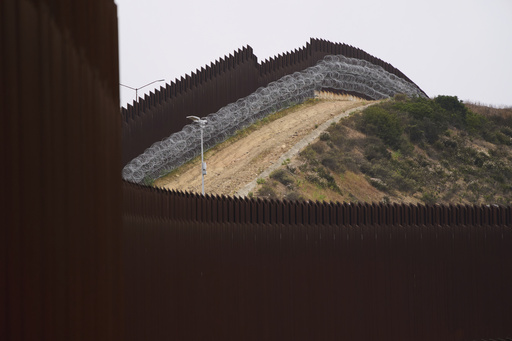President Donald Trump has put forward a budget proposal that would significantly boost funds for his aggressive immigration enforcement strategy, allocating nearly $150 billion over four years. This allocation would go towards extending the southern border wall, developing detention centers, and hiring a significant number of law enforcement officers.
The Immigration and Customs Enforcement (ICE) currently operates on an annual budget of around $10 billion. If President Trump’s sweeping budget proposal gets congressional approval, the increased funding could substantially alter the U.S. immigration enforcement landscape by enhancing detention and enforcement networks and potentially altering the cost structure for legal immigration pathways.
While the Senate deliberates its version of the plan, which largely mirrors the approach taken in the House, recent Republican efforts have stressed the urgency of passing the legislation, especially in light of sometimes-violent protests against the president’s immigration policy. This urgency was highlighted in June when unrest in Los Angeles erupted.
“The chaos in LA underscores our need to pass the comprehensive border security bill promptly,” House Speaker Mike Johnson stated on social media. “This funding is critical for securing our nation’s borders.” However, there is still much ambiguity surrounding the legislation.
“The language in several sections of the bill is exceedingly non-specific,” commented Adam Isacson, a researcher at the Washington Office on Latin America (WOLA), pointing out that some multimillion-dollar expenditures in the bill are vaguely detailed. “It’s not clear exactly how these funds will be utilized.”
Let’s delve into the main immigration components of the extensive bill, as passed by the House, and explore their potential implications for U.S. immigration policy:
**PROJECT: The Wall**
**WHAT THE BILL SAYS:** The proposal allocates $46.5 billion for what has been described as an “integrated border barrier system,” which includes fencing, water barricades, access roads for law enforcement, and modern technology like movement sensors. The funding is earmarked to build 701 miles of primary walls and 900 miles of river barriers along the U.S.-Mexico border.
**THE IMPACT:** Building the wall has been a flagship commitment from Trump, but its effects beyond political symbolism remain uncertain. Despite a significant reduction in illegal border crossings since Trump’s term began—partly due to ending the traditional asylum system—the effectiveness of physical border barriers remains controversial. Smugglers affiliated with drug cartels have been known to use creative means like tunnels, ladders, and power tools to navigate around and through the walls. However, experts caution that while crossings are currently low, the situation can change swiftly.
**PROJECT: Detention Facilities and Staff**
**WHAT THE BILL SAYS:** An allocation of $45 billion is designated for expanding facilities that detain migrants, both individuals and families. Standards in adult facilities would be determined by the Secretary of Homeland Security alone. Additionally, more than $12 billion is requested to hire 18,000 new ICE and Border Patrol personnel.
**THE IMPACT:** ICE aims to increase capacity to detain 100,000 people, up from the current 41,000. ICE’s acting director discusses a vision of a more efficient deportation system akin to fast delivery models in the private sector. Nonetheless, even the proposed funds may fall short of meeting Trump’s ambitious deportation goals, which include significantly upscaling daily arrest numbers. This expansion would benefit the private prison industry, as demonstrated by the surge in stock prices for companies like Geo Group Inc. and CoreCivic.
**PROJECT: Immigration Courts**
**WHAT THE BILL SAYS:** The bill earmarks $1.25 billion for the immigration court system, aimed at recruiting more judges and support staff and increasing courtroom capacity. This comes in response to a system struggling with a massive caseload and a backlog exceeding 3.6 million cases.
**THE IMPACT:** Understaffed with only about 700 immigration judges, the courts often witness chaotic proceedings, partly due to a shortage of translators and legal representation for immigrants. The situation has become more fraught with increased courtroom arrests, provoking fear among asylum-seekers who are accustomed to remaining free pending case reviews.
**PROJECT: Immigration Fees**
**WHAT THE BILL SAYS:** The legislation proposes overhauling the fee structure for immigration, introducing new charges for previously free services. Applications for asylum would now cost $1,000, with additional fees for employment applications. Various other costs would also rise significantly, potentially impacting the plans of less wealthy immigrants more than affluent ones.
This comprehensive overhaul of immigration policy under President Trump is designed to tighten borders and shift the dynamics of immigration law enforcement, though its potential execution and social implications remain to be fully understood.


